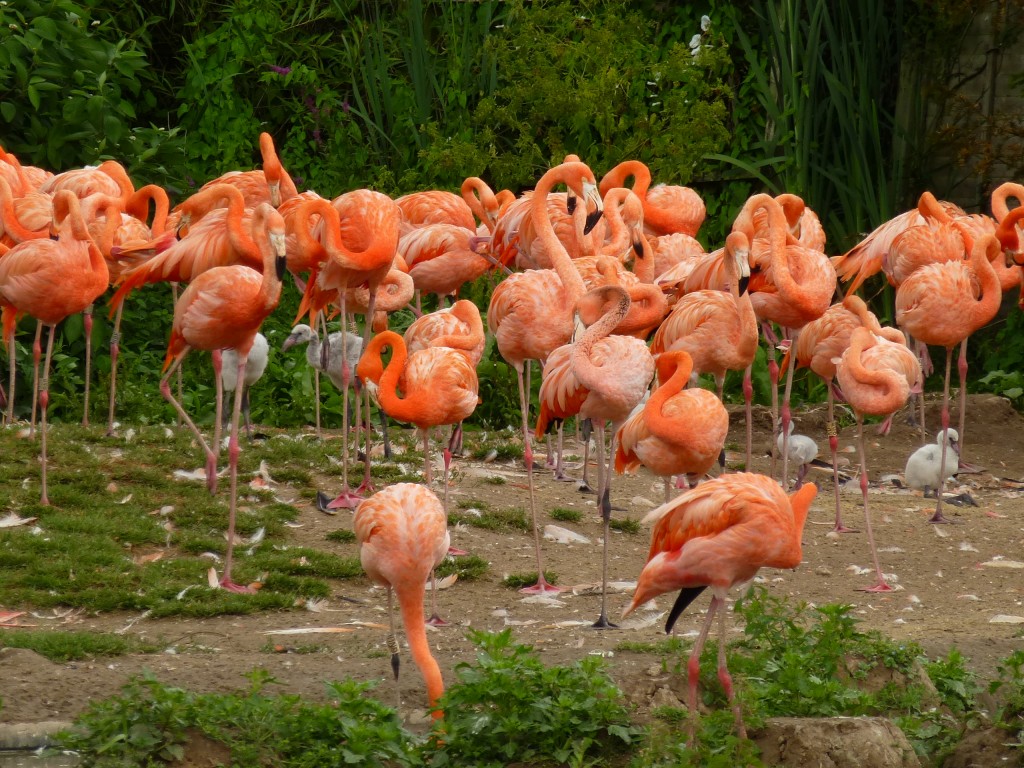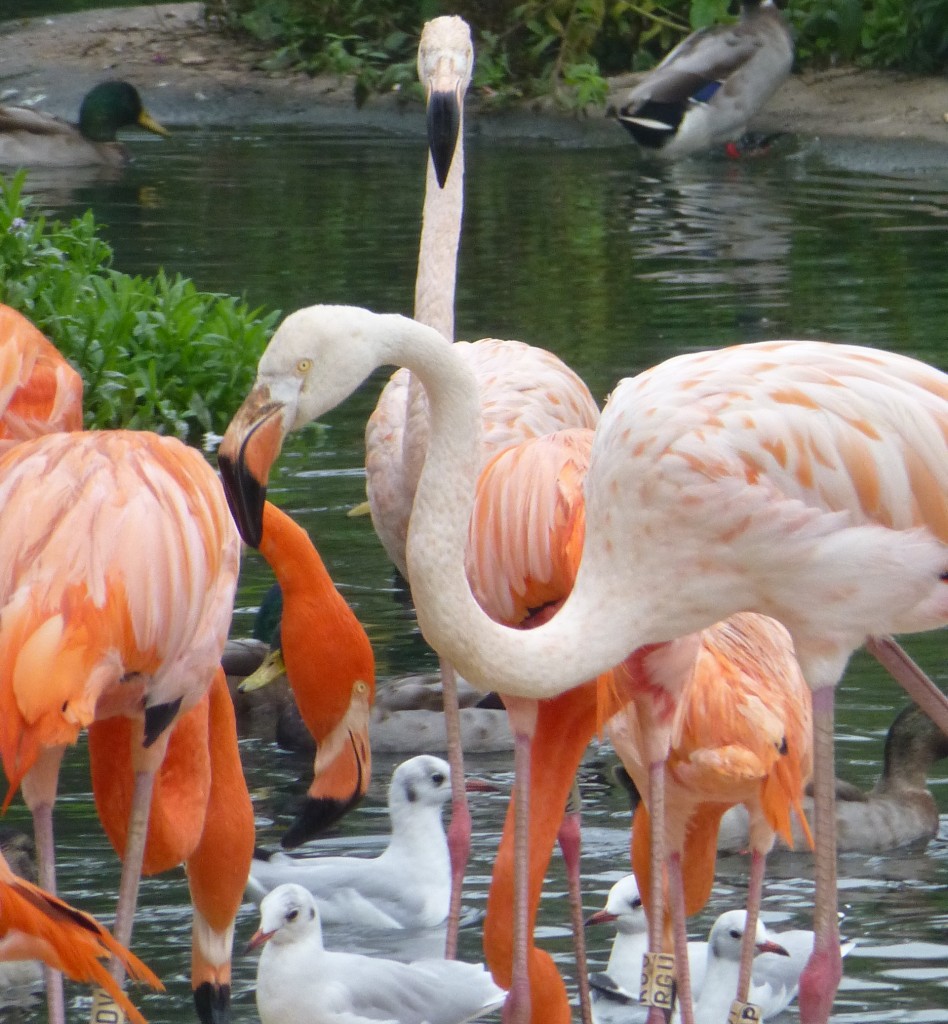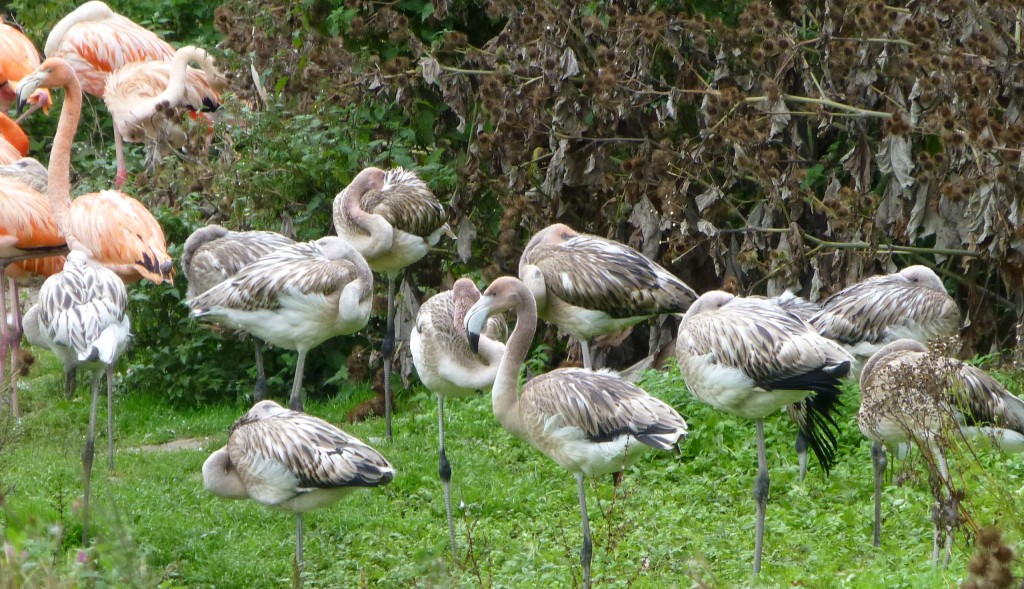Musings on flamingo behaviour, part two...
The Slimbridge flamingos continue to be a riot of colour and activity even as autumn progresses. In spite of it now being the end of the breeding season, birds might still be seen doing the odd courtship display. There is no real set time of year for when the flamingo dances need to occur, although you will see these behaviours a lot more frequently in the spring and summer. When out in the wild, flamingos take their cues to breed from prevailing environmental conditions, and captive birds are affected in a similar manner. As part of my research I have been talking to a fascinating lady out in the Caribbean, Ms Michaeline Molony, who documents the behaviour of the wild flamingos on the British Virgin Islands. Her work is documented in "The Flamingos of Necker Island". Michaeline has been reading these diary entries and has commented on the similar behaviours that I observe in the flamingos at WWT to what she has seen out in the wild.
Michaeline provided me an interesting insight into the nesting activities of these Caribbean flamingos. Just like the Slimbridge birds, who also decided to build their own nests far away from where they normally use human-made mounds, so too will free-living flamingos spurn human help. "The Necker flamingos eschewed human-built nesting mounds, moved over the hill to another pond altogether, and constructed their own mounds. When I asked that gardeners not groom the nesting area while chicks were being raised, the flamingos themselves cleared nearly every feather and plastered them into their mounds."

The colour of the birds is also important. I have mentioned before about adults being as pink as possible to show how virile they are, and keen to breed. But also that pale birds are indicative of pairs that have produced young. This is true in the wild too. If a pair of flamingos are strongly bonded and compatible as a pair, they can do their own thing without joining in the group display. Michaeline says: "I know what the studies say about the brightest birds mating first, but I recorded that it was the previous parents, often lightly coloured, that initiated earliest breeding and received the greatest "deference" from the colony." This goes to show that there is a lot more to the importance of flamingo plumage colour than we are aware of.

Finally, Michaeline describes some lovely creching behaviour. Again, we see this a lot at Slimbridge. And with groups of Caribbean and Chilean chicks bumbling around this will be a common sight over the next few weeks and months. "To me the grey chicks gather together to be comfortable with birds their own age, much the same as human children prefer to play with kids their own age. They form small subgroups within the crèche and some form lasting pair bonds within their first few months of life. Staying on the perimeters keeps them safe when the colony moves swiftly."

So there you are folks. Three snapshots into the life a flamingo that show you why a visit to WWT Slimbridge, and a day spent flamingo watching, really does give you an accurate picture of what these birds would be doing if you, and they, were out in the Caribbean rather than in the wilds of Gloucestershire.
If you'd like to know more about the social behaviours of the Slimbridge flamingos and their wider importance, then check out: http://www.bbc.co.uk/news/science-environment-24289422


